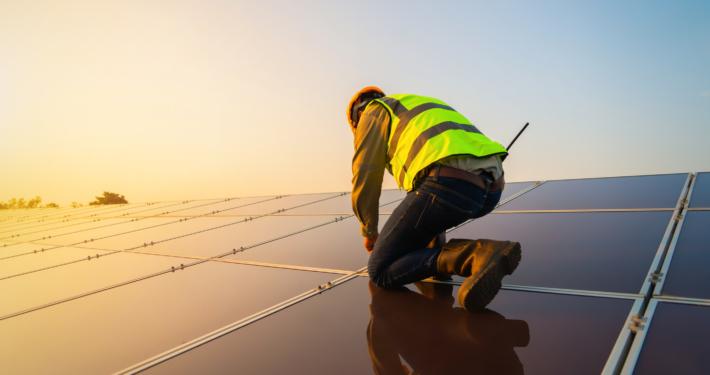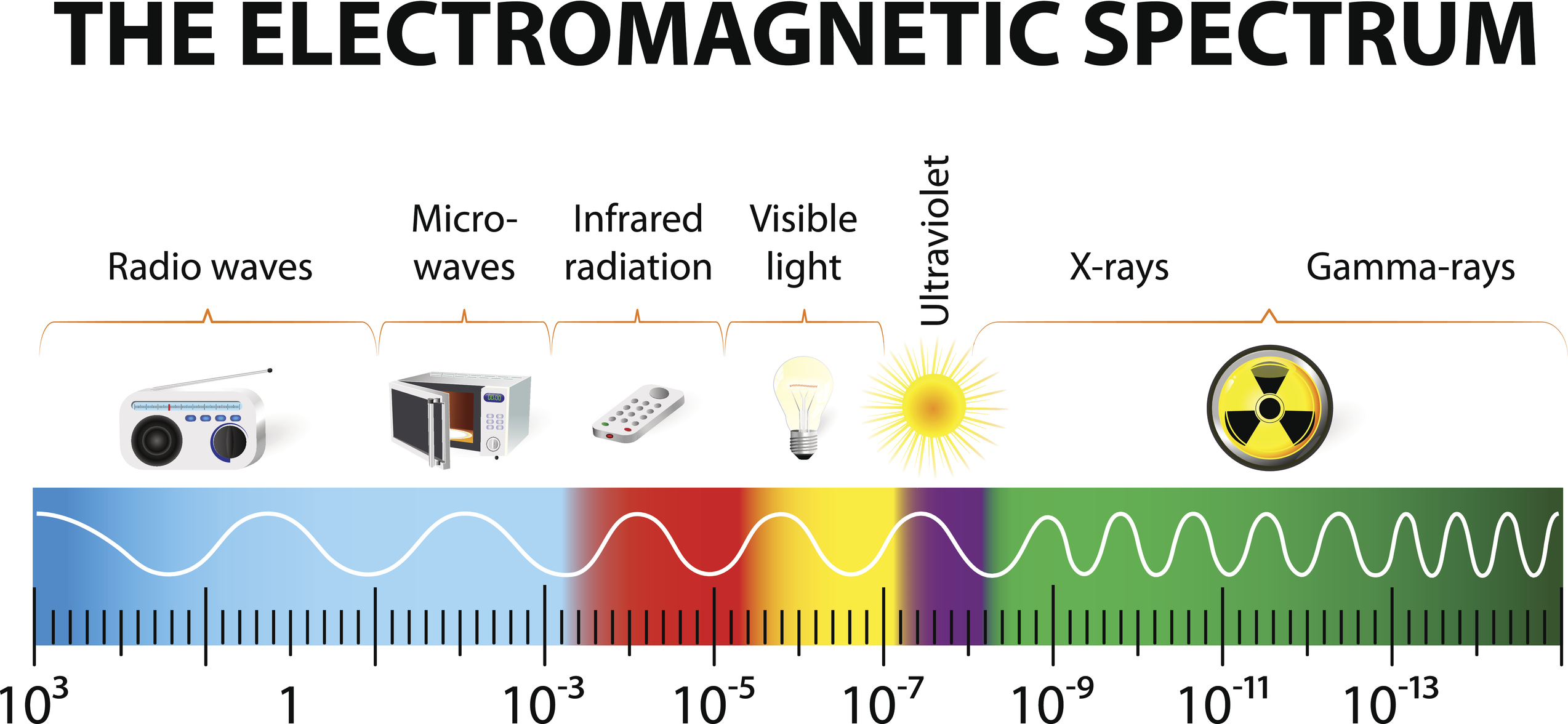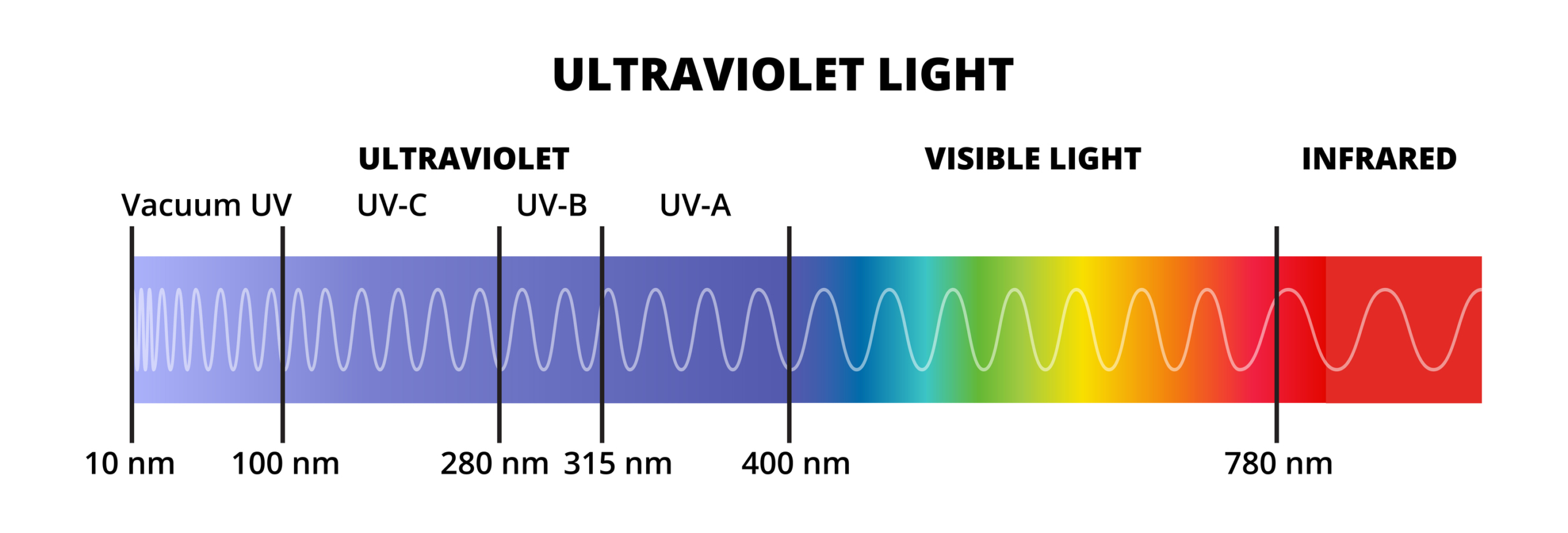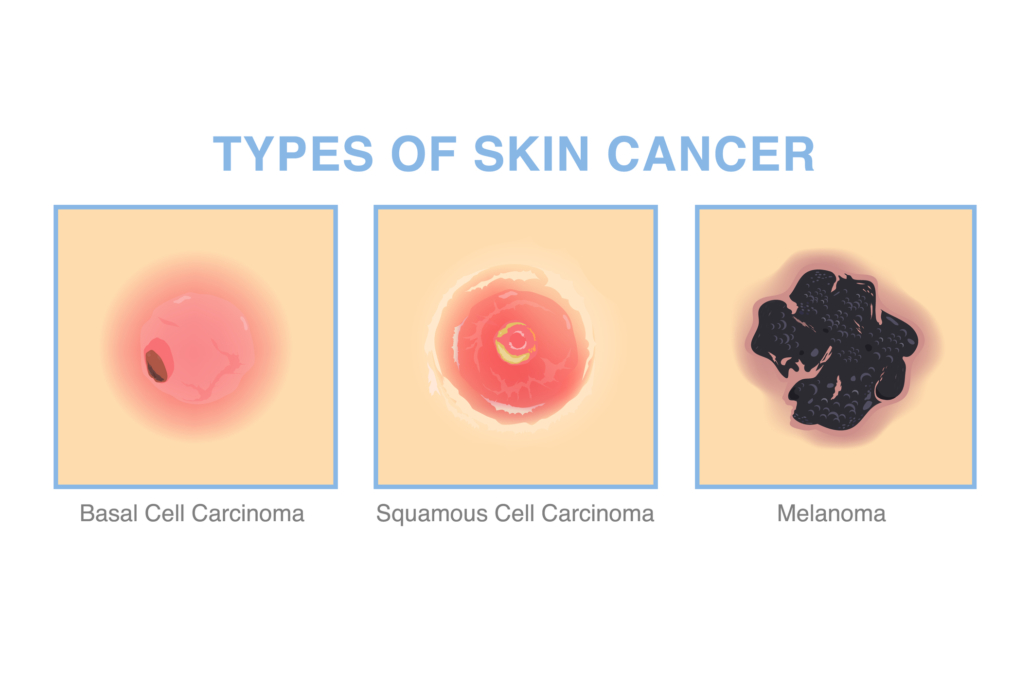Understanding the Invisible Threat – The Impact and Implications of UVA and UVB Radiation from the Sun
By: Richard Rich
Unraveling the UV Spectrum
Ultraviolet (UV) radiation is a subset of electromagnetic radiation that exists within the wavelength range of 10 to 400 nanometers (nm), situating it on the spectrum as having shorter wavelengths than visible light. Three main divisions classify UV radiation based on their respective wavelengths: UVA (400-315 nm), UVB (315-280 nm), and UVC (280-10 nm).
As a broader concept, the electromagnetic spectrum is a comprehensive scale that encompasses all potential wavelengths of electromagnetic radiation, ranging from radio waves and microwaves to infrared radiation, visible light, UV radiation, X-rays, and gamma rays. Each radiation type is characterized by distinct differences in wavelength, frequency, and energy level. On this spectrum, UV radiation resides between X-rays and visible light, showcasing higher energy and shorter wavelengths relative to visible light.
Whether it’s sunlight or any other UV radiation source, the rays that reach our planet are primarily a mix of UVA, UVB, and a scattering of UVC radiation. Luckily, the Earth’s atmospheric shield largely intercepts UVC radiation, preventing most of it from reaching the surface, which is beneficial considering the high energy and possible danger UVC radiation presents to living beings.
UVA Radiation
Wavelength Range: 315-400 nanometers (nm)
UVA rays, which have wavelengths between 315-400 nm, comprise over 95% of the UV radiation that reaches our skin. These rays are crafty; they’re not absorbed significantly by DNA, the molecule that carries our genetic information. Instead, they target other molecules within skin cells.
When UVA rays interact with these molecules, they generate unstable and potentially harmful substances called reactive oxygen species. These substances can damage various cellular components, including DNA, indirectly contributing to skin cancer despite their relatively low carcinogenic potency compared to UVB rays.
UVB Radiation
Wavelength Range: 280-315 nm
UVB rays, present in smaller quantities in sunlight but more potent than UVA rays, possess wavelengths between 280-315 nm. Unlike UVA rays, UVB rays interact directly with DNA. Their energy is absorbed by the DNA, leading to molecular rearrangements and the potential formation of mutations, a significant step towards skin cancer.
UVC Radiation
Wavelength Range: 100-280 nanometers (nm)
UVC radiation, with wavelengths between 100-280 nm, is the most powerful of the three types. Its high-energy rays can cause severe damage to living organisms. Fortunately, Earth’s protective ozone layer absorbs virtually all UVC radiation, preventing it from reaching the planet’s surface. If not for this shielding ozone layer, UVC radiation would render Earth’s surface inhospitable, burning it and obliterating most forms of life.
Section 2: Solar Interaction and UV Radiation
Our closest star, the Sun, is the predominant source of UV radiation that reaches Earth. It radiates a tremendous amount of energy, including visible light and various forms of electromagnetic radiation, such as UVA and UVB radiation, through nuclear fusion.
As sunlight traverses the Earth’s atmosphere, it interacts with an array of gases, particles, and other constituents that influence the transmission of UV radiation. The Earth’s ozone layer, situated within the stratosphere, is instrumental in filtering out a considerable portion of UVB and UVC radiation. It does so by absorbing and diffusing much of the Sun’s harmful UV radiation, impeding its reach to the Earth’s surface.
Nonetheless, the atmosphere doesn’t completely block all UV radiation. UVA radiation, characterized by longer wavelengths and lower energy, is relatively undeterred by the ozone layer and constitutes the majority of UV radiation that reaches the Earth’s surface. Even though UVA radiation is less likely to cause sunburn, it can deeply infiltrate the skin, contributing to long-term skin damage.
In contrast, the Earth’s atmosphere partially absorbs UVB radiation. While atmospheric particles scatter or absorb some UVB rays, a considerable amount still reaches the surface. UVB radiation is largely responsible for the immediate visible effects of sun exposure, such as sunburn, and is a critical player in the onset of skin cancer.
It’s noteworthy that UV radiation intensity fluctuates based on various factors, including geographical location, altitude, time of year, and time of day. For instance, UV radiation is typically most potent near the equator, at higher altitudes, and during summer months when the Sun is at its zenith. During these periods, the risk of UV-related skin damage and potential health consequences amplifies.
Section 3. Harmful Effects of UV Radiation on Skin:
UV radiation interacts with our skin on a cellular level, instigating biochemical cascades that can lead to harmful health outcomes. In particular, UVB radiation photons are absorbed by our skin cells’ DNA, resulting in the formation of DNA damage products, namely cyclobutane pyrimidine dimers (CPDs) and 6-4 photoproducts. If not properly repaired, these distortions in the DNA helix can result in UV signature mutations, potentially leading to the transformation of normal skin cells into malignant ones.
This harmful UV radiation affects the skin to varying depths. UVB radiation is absorbed primarily by the skin’s epidermal layer, causing an inflammatory response known as sunburn and damaging the skin’s outermost layers. Conversely, UVA radiation can penetrate deeper into the skin, reaching the dermis. Though it doesn’t cause DNA damage as extensively as UVB, it contributes to long-term skin damage and photoaging through the generation of reactive oxygen species (ROS), leading to indirect genetic damage.
Exposure to UV radiation can cause both acute and chronic skin damage, potentially leading to skin cancer—one of the most common cancers globally. Acute damage, primarily resulting from UVB radiation exposure, manifests as sunburn. Although mild sunburns often heal without leaving permanent damage, repeated and severe sunburns can increase the risk of developing melanoma, the deadliest form of skin cancer.
Chronic damage, on the other hand, is characterized by premature skin aging or photoaging and skin cancer, primarily caused by UVA radiation. This chronic damage results in the breakdown of collagen and elastin fibers in the dermis due to the oxidative stress induced by UVA radiation. The most serious long-term effect of UV radiation exposure is the development of skin cancers, including non-melanoma skin cancers like basal cell carcinoma and squamous cell carcinoma, as well as melanoma. The mutations caused by UV radiation can give rise to cancer cells, forming tumors, underlining the importance of effective protective measures against UV exposure.
Section 4. Conclusion
The potential harm of UV radiation exposure to the skin is profound and far-reaching, ranging from DNA damage, cellular mutations, to the development of skin cancer. Our understanding of the interactions between UV radiation and our skin cells has significantly evolved, shedding light on the harmful mechanisms triggered by both UVB and UVA radiation.
Acute damage like sunburn and chronic consequences such as photoaging and skin cancer underscore the importance of a comprehensive approach to sun protection. With the increasing incidence of skin cancer globally, it is clear that public awareness and preventive strategies are of utmost importance.
As we move forward, continued research on UV-induced skin damage and skin cancer is crucial, not only to improve our understanding of the associated biological processes but also to develop new protective measures and treatments. In the meantime, effective protective strategies such as wearing sunscreen, seeking shade, and wearing protective clothing remain our best defense against the deleterious effects of UV radiation.
Through a combination of awareness, prevention, and advancing scientific research, we can mitigate the harmful effects of UV radiation, thus safeguarding our skin health and overall well-being.










